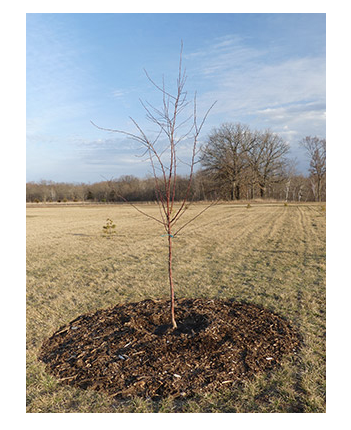Watering
- Posted on

Watering newly planted trees and shrubs:
To make this easy follow this rule for newly planted trees and shrubs.
Water your new plants everyday for the first 7 to 10 days no matter what.
How much Water?
Shrubs - 1 to 5 gallons everyday for 7 to 10 days
Trees - 10 to 15 gallons everyday for 7 to 10 days
You can not over water your tree or shrub in 7 to 10 days in North Dakota.
After 7 to 10 days of watering, then 1 or 2 times a week for the rest of the season.
Shrubs in windy sunny arrears will need more water then the plant on the north side or in shade.
For Tip and Tricks and a deeper look into Watering plants: Continue Reading Article.
Watering Trees
A very slow trickle from the garden hose is usually the most recommended. Trees drink best not with just dumping 5 gallons of water but a slow watering that will allow more absorption of nutrients. Trees hydrate themselves by the water dripping off their leaves and slowly absorbing by their drip line. Ten gallons per week is usually recommended the best to start with.
To measure a slow trickle from a garden hose. Take a five gallon bucket and time out how long for the hose on a slow trickle to fill that bucket. So if it takes 20 minutes to fill, you should be able to judge that every 20 minutes you should move the garden hose to another tree.
An important factor in tree survival is providing water at the correct frequency. The first 3 years are most critical, but pay attention to watering needs throughout the tree’s life. In arid environments most trees will have to be watered throughout the growing season and during dry winters for life unless they are native to that area.
Frequency depends on water uptake by plants, surface evaporation, and soil drainage. Soils that drain quickly will require more frequent watering than those that drain slowly. To determine your soil’s drainage rate. The best way to know how often and how much to water is to check the soil moisture at 6 inches below the surface. Water when dry. If the soil is dry, provide about 2 gallons of water per diameter inch of the trunk.
Tip:
Make a reservoir over the root ball for watering. Create a water reservoir by making a circular mound of earth 3 to 4 inches high around the plant at the edge of the root ball.
Tree water bags hold 14-15 gallons of water and release a slow trickle of water over 5-9 hours. Tree water bags can also be used to provide a slow delivery of water over the root balls of establishing trees and shrubs.
Mulching trees and shrubs maximizes water uptake
When trees and shrubs are planted into turf, competition for nutrients, water, and space occurs below ground between turf roots and woody plant roots. Turf wins because its dense fibrous root system prevents woody plants from producing water- and nutrient-absorbing roots in the top few inches of soil. As a result, woody plant establishment and growth is slower in turf areas than in mulched or bare soil areas.
To optimize root production, water uptake, and establishment of newly planted trees and shrubs:
---Eliminate turf and weeds from the base of the plant out to several feet beyond the plant canopy.
---Leave the top of the root ball bare and start the mulch application at the outer edge of the root ball.
---Apply a 3-inch layer of organic mulch around newly planted trees and shrubs in a circle that extends several feet beyond the tree or shrub canopy.
Mulching around newly planted trees and shrubs with organic materials (wood chips, pine needles, etc.) has several advantages over bare soil cultivation.
---Decreases water evaporation from soil.
---Serves as a sponge that prevents runoff around plants growing in heavy clay soils or on sloped sites.
---Helps to control seed germination and growth of weeds.
---Insulates soil and buffers extreme summer and winter soil temperatures.
---Reduces soil compaction from mowing equipment.
---Prevents damage to stems and trunks by lawn mowers and weed cutters.
---Improves soil health (increases microbial activity, nutrient- and water-holding capacity, soil pore spaces, and air penetration) as it decomposes.
Don't add more than a 3-inch layer of mulch because deep mulch applications may:
---Prevent movement of rain or irrigation water into the root ball of newly planted trees and shrubs. This can result in roots drying up and plant stress.
---Lead to root production and growth in the mulch. This often results in circling and stem-girdling roots.
---Reduce oxygen levels around roots and cause root suffocation.
---Keep poorly drained soils too wet, which favors root rot development.
---Keep bark excessively wet when piled around trunks and stems. This may lead to bark decay.
---Create habitat for rodents that chew bark and girdle trunks and stems.



